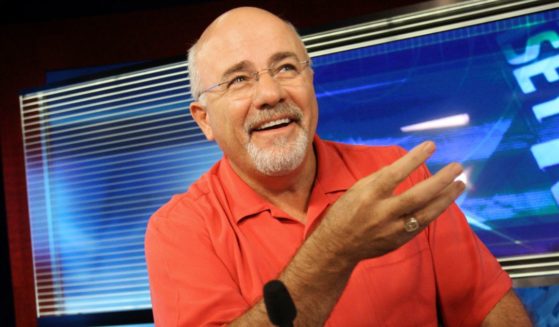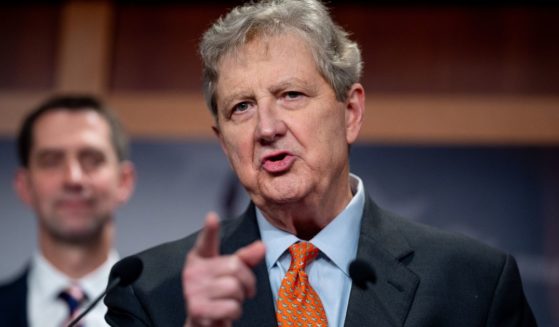US Cities Consider Banning Common Traffic Move
Sophee Langerman was on her way to a bicycle safety rally in Chicago’s Lakeview neighborhood in June when a car turning right rolled through a red light and slammed into her bike, which she was walking off the curb and into the crosswalk.
The car was moving slowly enough that Langerman escaped serious injury, but the bicycle required extensive repairs. To Langerman, it’s another argument for ending a practice that almost all U.S. cities have embraced for decades: the legal prerogative for a driver to turn right after stopping at a red light.
A dramatic rise in accidents killing or injuring pedestrians and bicyclists has led to a myriad of policy and infrastructure changes, but moves to ban right on red have drawn some of the most intense sentiments on both sides.
Washington, D.C.’s City Council last year approved a right-on-red ban that takes effect in 2025. New Chicago Mayor Brandon Johnson’s transition plan called for “restricting right turns on red,” but his administration hasn’t provided specifics. The college town of Ann Arbor, Michigan, now prohibits right turns at red lights in the downtown area.
San Francisco leaders recently voted to urge their transportation agency to ban right on red across the city, and other major cities such as Los Angeles, Seattle and Denver have looked into bans as well.
“Drivers should not have the option to decide for themselves when they think it’s safe,” said Langerman, 26. “People are busy. People are distracted.”
But Jay Beeber, executive director for policy at the National Motorists Association, an advocacy organization for drivers, called it a “fallacy” to assume such blanket bans would make streets safer.
He cited an upcoming study by his association that analyzed California crash data from 2011-2019 and found that drivers turning right on red accounted for only about one pedestrian death and less than one bicyclist death statewide every two years.
“What’s really behind this movement is part of the agenda to make driving as miserable and as difficult as possible so people don’t drive so much,” Beeber said.
Safety advocates counter that official crash reports are often mislabeled, undercounting the dangers.
The United States is one of few major countries that generally allow right turns on red. Concerned that cars idling at stop lights could compound an energy crisis, the U.S. government warned states in the 1970s that they could risk some federal funding should cities prohibit right on red, except in specific, clearly marked areas. Although another energy-conscious provision capping speed limits at 55 mph has long been abandoned, right on red has endured.
“It’s an example of bad policy,” said Bill Schultheiss, director of engineering at Toole Design Group, which consults with public transportation agencies. “It made sense in the context of the gas crisis, but it was way oversold on what it would achieve. It’s a mandate that doesn’t consider the full consequences.”
Right on red has never been allowed across most of New York City, where large signs alert Manhattan’s visitors that the practice is prohibited there. But it was the default policy practically everywhere else in the U.S. until last year’s vote in the nation’s capital.
Safety advocates who pushed for the change in Washington, D.C., are bracing for blowback from drivers, particularly if the city also allows the so-called Idaho Stop in which cyclists are permitted to go through a red light after stopping to make sure the coast is clear.
“There are just some battles, in terms of public opinion, where you have to be content to sacrifice that for the safety of the people,” said Jonathan Kincade, communications coordinator at the Washington Area Bicyclists Association. “It doesn’t make sense to treat cars and bikes the same. They’re not the same vehicle, and we’ve seen the outcomes of that.”
Critics argue that banning right on red will not only inconvenience motorists but also slow down commuter buses and deliveries. The United Parcel Service hasn’t taken an official position on right on red but has long directed its drivers to avoid left turns whenever possible, viewing them as inefficient.
Priya Sarathy Jones, deputy executive director at the Fines and Fees Justice Center, is concerned penalties from right-on-red bans will fall disproportionately on lower-income drivers who have to drive to work because they can’t afford housing near public transit. If there’s more enforcement at red lights, more cameras are certain to follow, she said. And in the Chicago area, any discussion of red light policy often conjures up memories of the region’s vilified red-light camera program, which spurred bribery charges against public officials accused of trying to influence the high-profit contracts.
“It generates a lot of money for the city, instead of our decisions being driven by safety strategies backed by evidence,” she said, suggesting that road infrastructure improvements would be a much more effective way to reduce accidents.
There are no recent, nationwide studies of how many people are hurt or killed by right-turning drivers.
According to a national report by the Governors Highway Safety Association, more than 7,500 people walking were struck and killed by automobiles in 2022, the highest number since 1981. The spike, which included all accidents — not just those involving right turns on red, was attributed in part to an increase in larger vehicles such as SUVs and pickup trucks on the road.
The Insurance Institute for Highway Safety found that the odds a pedestrian would be killed when struck by an automobile turning right were 89% higher when the vehicle was a pickup and 63% higher when it was an SUV, due to larger blind spots and the deadlier force associated with heavier models.
“These big, blunt front hoods, they knock people down and run over them, as opposed to before when people would crumple onto the hood,” said Mike McGinn, a former Seattle mayor who is the executive director of America Walks, a national nonprofit that advocates for pedestrian-friendly neighborhoods.
Much of the research looking directly at the impact of right-on-red policies is years if not decades old, but both sides argue it’s still relevant.
The National Highway Traffic Safety Administration in a 1994 report to Congress looked at four years of crash data from Indiana, Maryland and Missouri and three years of data from Illinois, counting a combined 558 injury crashes and four fatalities stemming from right turns on red. Advocates of a ban point out that study came before the nation’s vehicle fleet grew much larger and more lethal.
But Beeber said the National Motorists Association study of California found that even when there was an accident associated with right turns on red, at least 96% of the injuries sustained by pedestrians or cyclists were minor.
“One injury or death is too many,” said Washington state Sen. John Lovick, the primary sponsor of a bill this year that would have prohibited right on red statewide near schools, parks and certain other locations. “If it were me at that intersection crossing, I would want something done.”
Lovick’s bill didn’t make it out of committee, but Seattle this year made it the default policy to prohibit right on red when new traffic signals are added.
Melinda Kasraie testified on behalf of Lovick’s bill at a legislative hearing, sharing her experience being struck by a car turning right on red in Seattle. She needed a total knee replacement, had to give up her 20-year job and moved to a small town in part due to her newfound fears of crossing the street.
“He just needed to wait 20 more seconds and he would have had a green light, and that 20 seconds made a big impact on me,” Kasraie said.
The Western Journal has reviewed this Associated Press story and may have altered it prior to publication to ensure that it meets our editorial standards.
Truth and Accuracy
We are committed to truth and accuracy in all of our journalism. Read our editorial standards.












